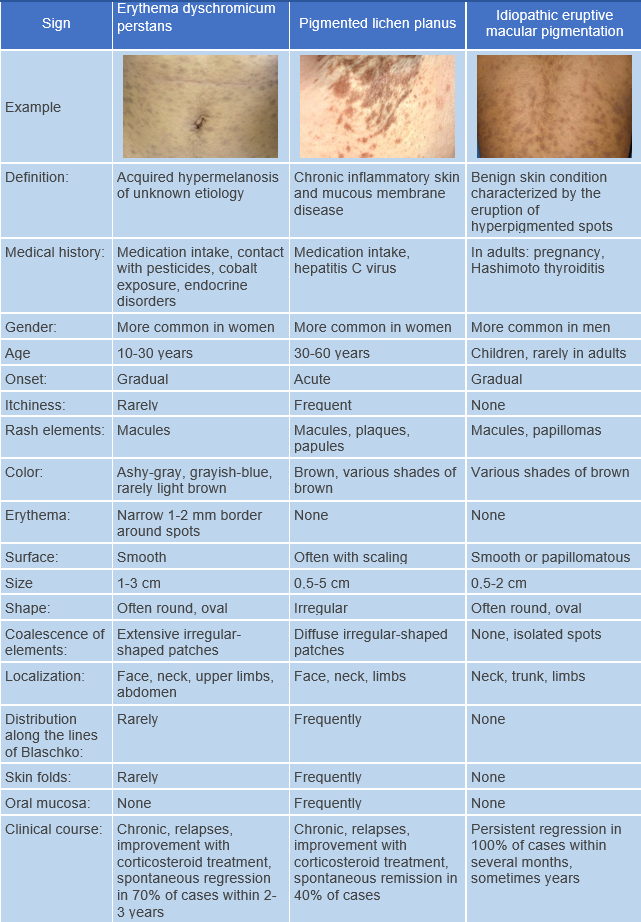Idiopathic eruptive macular pigmentation is a benign skin disorder that primarily affects children and adolescents and is characterized by the eruption of hyperpigmented macules and/or flat papules. ICD-10 Code: L81.9
It occurs in children and adolescents, although isolated cases have been described in adults. The prevalence is unknown because many cases are misdiagnosed as other hyperpigmentations. Etiology and pathogenesis are unknown.
Some authors consider the condition a variant of erythema dyschromicum perstans, while others consider it a variant of acanthosis nigricans in the presence of superficial papillomas. There have been reports of an association with pregnancy and Hashimoto thyroiditis in adult cases. Familial cases have not been reported.
The disease begins with the sudden appearance of one or more hyperpigmented macules and/or flat papules, 0.5-2.5 cm in size, brown or dark brown in color, without previous skin changes. The spots are isolated, usually round in shape, but may be polycyclic, with a smooth surface and no scaling. In some cases, there are papillomatous growths on the surface, and this form of the disease is called papillomatous.
As the disease progresses, new eruptions appear on the face, neck, trunk, and proximal parts of the limbs. Sometimes the number of elements can reach hundreds, but usually there are several dozen. There are no subjective symptoms.
The disease is chronic and benign. After several months to years the eruption disappears spontaneously. The disease does not usually recur.
- Presence of isolated, asymptomatic brown spots or spot(s) on the face, neck, trunk, and proximal parts of the limbs.
- Absence of previously existing inflammatory skin conditions.
- No association with the use of medications.
- Specific histological findings


